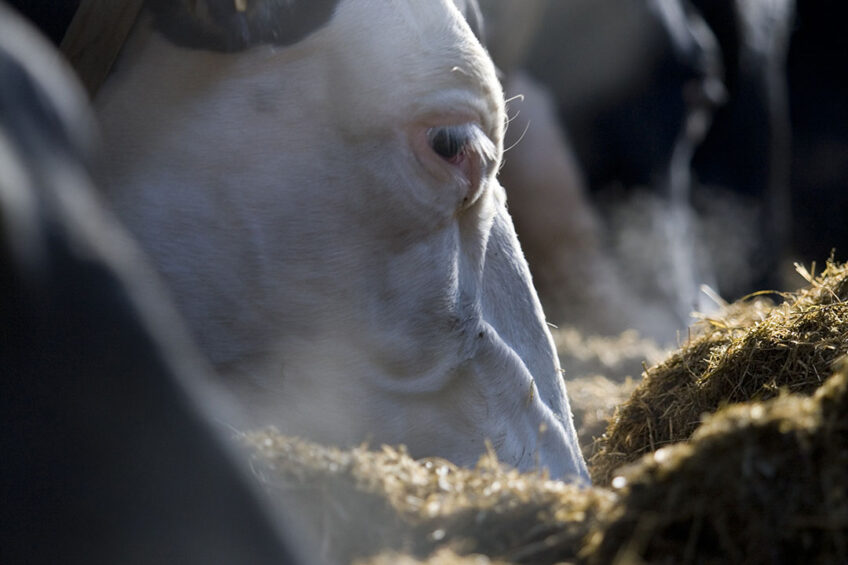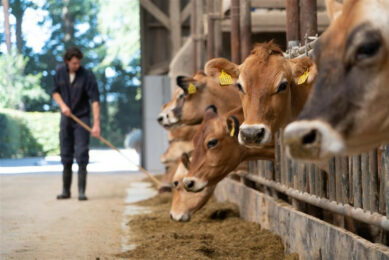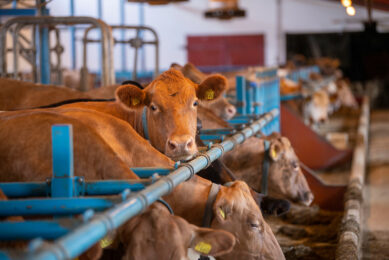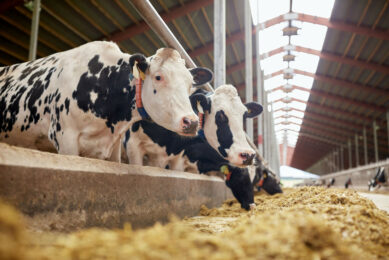3 key factors for optimal herd health and performance

Numerous factors can impact dairy herd health and performance, including genetics, management, housing and stress. However, the most fundamental factor in ensuring herd success is nutrition. Here we discuss 3 key areas of dairy cow nutrition that should be considered in order to get the most from your herd.
 |
| Photo: Jan Willem Schouten |
Adequate dry matter intake
While the link between maximising dry matter intake (DMI) and greater milk yields to result in increased profits is understood, it is important to remember that maximising DMI also offers many other advantages for dairy cow performance. The milk yield of the modern dairy cow has increased substantially; if DMI is inadequate, this can be associated with a nutritional energy deficit. Not only will this deficit impact body condition, which can impair a cow’s ability to produce the milk yields possible in terms of its genetic potential, it can also reduce successful conception rates and increase risk of metabolic disease. Therefore, ensuring adequate DMI is crucial to ensuring dairy cows’ performance and number of lactations within the herd.
One key factor in driving DMI is the palatability and presentation of the ration. Palatability of the feed is influenced by numerous factors, including freshness, presence of mould, spoilage of raw materials or silage, moisture and temperature. Cows are particularly sensitive to unpalatable feed and will actively avoid consumption of such feed. Therefore, ensuring that high quality feed is presented to the herd is essential in maximising DMI and feed intakes.
 Excess soluble dietary protein
Excess soluble dietary protein
Ensuring provision of the correct balance of rumen degradable protein (RDP) and rumen undegradable protein (RUP) is fundamental in supporting all areas of cow maintenance, reproduction and milk production. Low levels of RDP can negatively affect rumen fermentation, reducing feed efficiency; however, the issues surrounding excess dietary soluble protein can be equally problematic.
Provision of excessive protein can have a negative effect on dairy cow fertility. This is due to the impact that excess proteins have on uterine pH, resulting in an unhospitable environment for the developing embryo. Excess proteins can also exacerbate the energy deficit seen in high-yielding dairy cows as previously mentioned, because the additional protein must be broken down. This process requires additional energy that could be used by the cow for other metabolic functions.
 Canola meal in dairy rations
Canola meal in dairy rations
New research explains why use of this high-protein ingredient has increased in many countries.
Improvement of nitrogen efficiency is a key target associated with the reduction of greenhouse gases. Nitrogen efficiency is calculated by dividing protein intake by protein output in the milk. It is important to remember that more protein in the diet does not always result in a higher level in the milk. Instead it can result in higher levels being excreted in urine and manure, leading to increased nitrous oxide and ammonia in the environment. Therefore improving nitrogen efficiency is incredibly important.
Finally, overfeeding of protein can be detrimental to profit margins because as protein levels in the dietary rations increase, feed is more expensive. Therefore, providing too much protein – which is ultimately being excreted by the cow – is an ineffective and costly nutritional strategy.
 Omega-3 fatty acid supplementation
Omega-3 fatty acid supplementation
Supplementing dairy cow diets with omega-3 fatty acids, especially eicosapentaenoic acid (EPA) and docosahexaenoic acid (DHA), can offer an additional energy source to help mitigate the negative energy balance common in high-yielding dairy cows. EPA and DHA can provide a highly digestible energy source and are well documented to support fertility and pregnancy rates in dairy cows. An improved energy balance can also help to support lactation performance and reduce the omega-6:3 ratio.
 Webinar: Fertility through nutrition in dairy cows
Webinar: Fertility through nutrition in dairy cows
In case you missed it! This webinar is now it’s available to watch it on demand…
Ensuring optimum fertility is vital to the success of any dairy enterprise. Reproductive failure has been recognised as the most prevalent reason for involuntary culling globally. This is associated with significant costs in replacing these animals, as well as the consequent loss in milk production. Pregnancy rates of under 20% are all too common, whereas a target of 30–35% should be achievable. A previous study conducted by Wiltbank in 2016 demonstrated that while around 70–80% of services result in successful fertilisation of the egg, by day 28 post-insemination only 50% of cows are actually pregnant. This is reduced to only 38% by day 42, with this early embryonic mortality being primarily due to failure of maternal recognition of pregnancy.
Figure 1 – The effect of EPA and DHA omega-3 fatty acid (Optomega Plus) supplementation on the conception rates of a high yielding dairy herd following a Double-OvSynch insemination programme for 1st Service (Robinson et al., 2018).

A trial was conducted by the University of California Davis in conjunction with Anpario to determine the effect of the omega-3 fatty acids EPA and DHA on the fertility and milk quality of high-yielding dairy cows. Three hundred multiparous lactating dairy cows, producing more than 50kg milk/cow/day, were assigned to 1 of 2 dietary treatments. This was either a control diet, consisting of a basal total mixed ration (TMR), or the same base diet supplemented with Optomega Plus, at 160g/head/day. The cows were artificially inseminated following a double-OvSynch programme for first service and, if unsuccessful, a single-OvSync programme for second service. The cows were from a high-performing dairy herd with conception rates above 50% to first service. Therefore, no improvement was expected. However, the supplementation of TMR with omega-3 fatty acids EPA and DHA increased conception rate to second service from 39.5 to 49.1% – an increase of almost 10% points (Figure 1).
The feeding of Optomega Plus in this study did not impact DMI, with intakes the same in both the control and treatment groups. Therefore, unlike some other alternative fatty acid supplements available, intakes were maintained most likely as a result of the enhanced palatability of feed supplemented with Optomega Plus. In addition, although dietary protein intake remained the same, this study also showed that Optomega Plus supplementation resulted in a higher milk and protein yield. Therefore nitrogen efficiency was improved by almost 2%, from 27.8% to 29.5%. This outcome, combined with the benefits seen in conception rates, is a very exciting and important result.
References are available on request.
Join 13,000+ subscribers
Subscribe to our newsletter to stay updated about all the need-to-know content in the dairy sector, two times a week.










